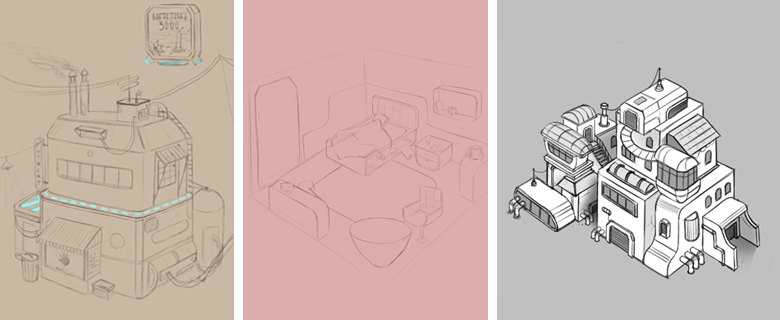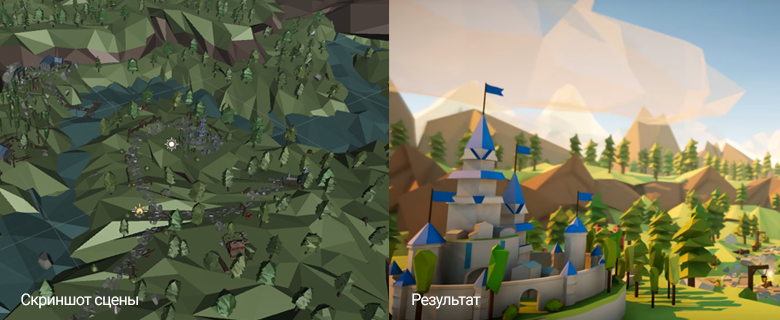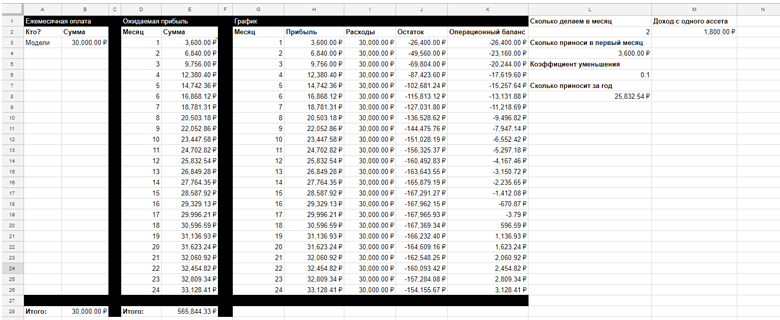Life at the Unity Asset Store. Briefly

Good day. Not so long ago, I published a note about my inexperienced start of stuffing cones in the game development world. If specifically - the development of assets in the Unity marketplace. Over the past three months I have gained some experience with which I want to share. I will try in this text to briefly and concisely disclose it from several sides. Development, design and publication, finance and some pictures.
Perhaps someone is engaged, someone thinks to do the same thing - I ask under the cat, I will be glad to your comments and thoughts.
-one. Small preface
Why not the development of the finished product on Steam or under mobile stores, namely the marketplace? In this area is inexperienced and decided to look at this “kitchen” on a small scale. Artists. Programmers. CG guys. Their interaction. I think that it is better to lose a few weeks than a few months, having received similar experience and extrapolating it to develop larger things.
')
0. Development
In order to sell something - you must first do something. And preferably for a period of time that is enough motivation. About two to three weeks to begin with. A similar iteration size is chosen to try to debug all processes and simply from the ceiling, like a beautiful number.
Let's start with the asset type. If it is rather crude to summarize, then at the moment the distribution of the number of published by the following:

There is an option to choose sections with the least competition. Services, animation, particle systems. But, I think, for a reason, quite a few publish something new in them, although the amount of work is about the same. So let's go the beaten track - 3D models . For a period of two to three weeks, it will just turn out to make either a normal character or a location (environment) in about ~ 100 models.
Well, then immediately begins the work of 3D-modeler. Inspired at the initial stage can be referenced from the Internet, then go to work with artists who can quickly make sketches and issue something like this, which greatly saves time:

Some nuances that were learned from the correspondence with technical support and their experience:
- For mobile games, ideally from 400 to 1500 polygons per mesh;
- Desktops and, say, an important character in mobile - from 1400 to 5000;
- When exporting fbx as a unit, make sure that the thumbnail is not turned upside down;
- If it is good to arrange pivots, then it is much easier to cling torches to walls
- Half an hour on a small document is better for a modeler than for cars the size of a building;
- The previous item is necessary because moderators do not reject 1: 1 objects on the scene;
- Textures and materials at a minimum. We chose a low poly style - one texture ;
After a couple of weeks we get a zip archive, about 15-20 megabytes, and you can already create demo scenes. One or two to record video, the second or third to show all possible objects.
Lesson is simple, takes about 4-8 hours. Create folders models , textures , materials , prefabs and scenes . Well, then, if the pivots are set up perfectly, we hold down the ctrl, we do what we consider beautiful, we conjure a little with the light baking settings, add a pinch of particles and, using the Unity package , add our work to the draft. It is assumed that the account in the UAS has already been created.

Tip of the day - a small script that passes subfolders with models recursively and creates prefabs is extremely good when you are too lazy to make 100 prefabs with the mouse and the mouse to drag meshes onto them. And it is advisable to do this before the placement of objects in the scene, and not like me.
1. Design and publication
Now go to the equally important part. A simple gentleman's set is a teaser , speed level design video , several screenshots from a favorable angle, the so-called key images and a little sketchfab . Optionally, you can create a second small asset, free of charge, for review.
We have a limited development time, so for images (key images), it’s enough to order a template for three images from the designer once and then just change the words and background:

Tip of the day - do not use Unity logos in the design, because Assets will be rejected for misleading users regarding the developer. We've noticed your Unity logo within your key images. It can be yours. We ask you to avoid confusion.
For speed level design video - screen recording. For a teaser - buy music on audojungle , and give free rein to your imagination. Approximately 4-8 hours per video will be fine. With the growth of experience, the quality will increase with the preservation of the terms. As an example, I can show two videos - a sample and one made for training . I apologize in advance for my English.
After creating the above items and filling out the description, tags and names, all that remains is to click on the Submit button in the draft and enjoy the wait at ~ 21 days. If your work is rejected, you can not worry, after the secondary posting (even if you don’t immediately republish), the re-check will be within 24 hours. And the reason will always be described in detail.
2. Finance
Now a little retrospective. Perhaps we will start with attendance from Google Analytics (by the way, it is very easy to connect in your publisher account, in the Info tab).

The bounce and conversion rates, as I assume, are due to untargeted users who enter our assets. Unfortunately, this information is extremely small, there is nothing to compare, but I think you can rely on such figures for “mediocre” assets without a soul that can be put on stream.
Unity takes 30% as a commission, the amount of sales for an asset worth
From this quite curious calculations follow. At the moment, Editor Extension Asseset brings about 10-15% more than one 3D , but the development time of a software product is 2-3 times longer. This documentation, bugs, compatibility with different versions of Unity etc. Therefore, if we talk about streaming development (which does not mean poor quality, just clearly limited, reflected in price), working with one modeler is about four times more profitable than working with one programmer. Just below the table for what we are doing now and + - corresponds to the real situation.

Pretty sad tsiferki, which have not yet included other expenses (concepts, help designers on the design of the initial etc.). Therefore, as an epilogue I would like to formulate several conclusions that I made for myself. If you have something to add, or I missed something, welcome to the comments.
- If you are engaged in 3D and from expenses only your personal time is another way to earn, because learn how to assemble a scene as a unit - a couple of hours of consultation with a game dev developer
- This applies to animators / programmers, etc.
- As a way to put together a team that is not enthusiastic and to cover some expenses is still a great way;
- I have not tried to release tutorials on Unity using created assets, because each product must be sold, all of the above is about organic traffic from the marketplace;
- In order to turn this into a main activity from the point of view of project management, it is necessary to improve the quality of assets, moving accordingly to longer iterations, as evidenced by other studios in the UAS;
- Turning to long iterations, you can smoothly proceed to the development of Complete Projects and the development of your own game, which is equivalent (only the nuances of marketing and work);
Why develop your game?Everyone believes in something and hopes for something :).
I would be glad if it would be interesting to someone and doubly glad if it helps someone. Thank you for your attention.
Source: https://habr.com/ru/post/344306/
All Articles